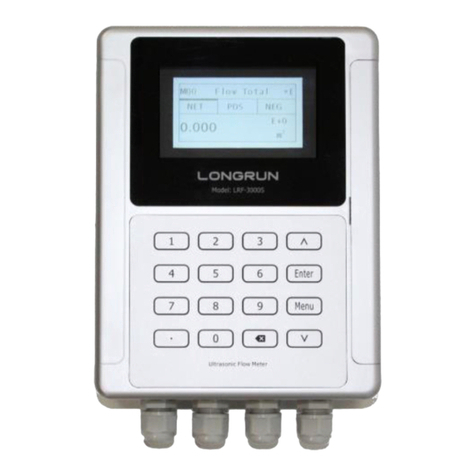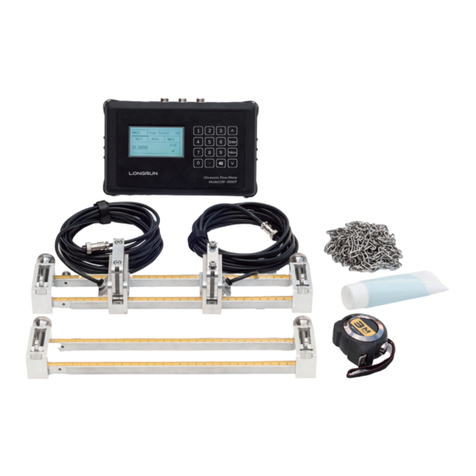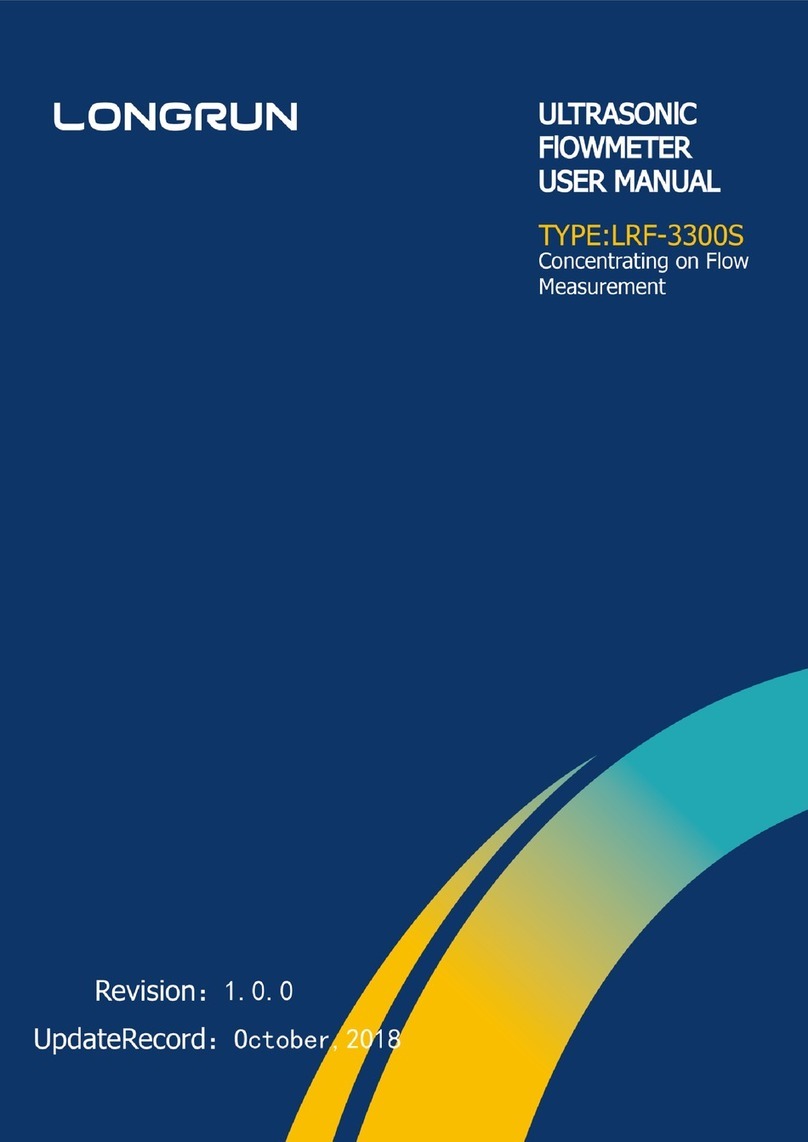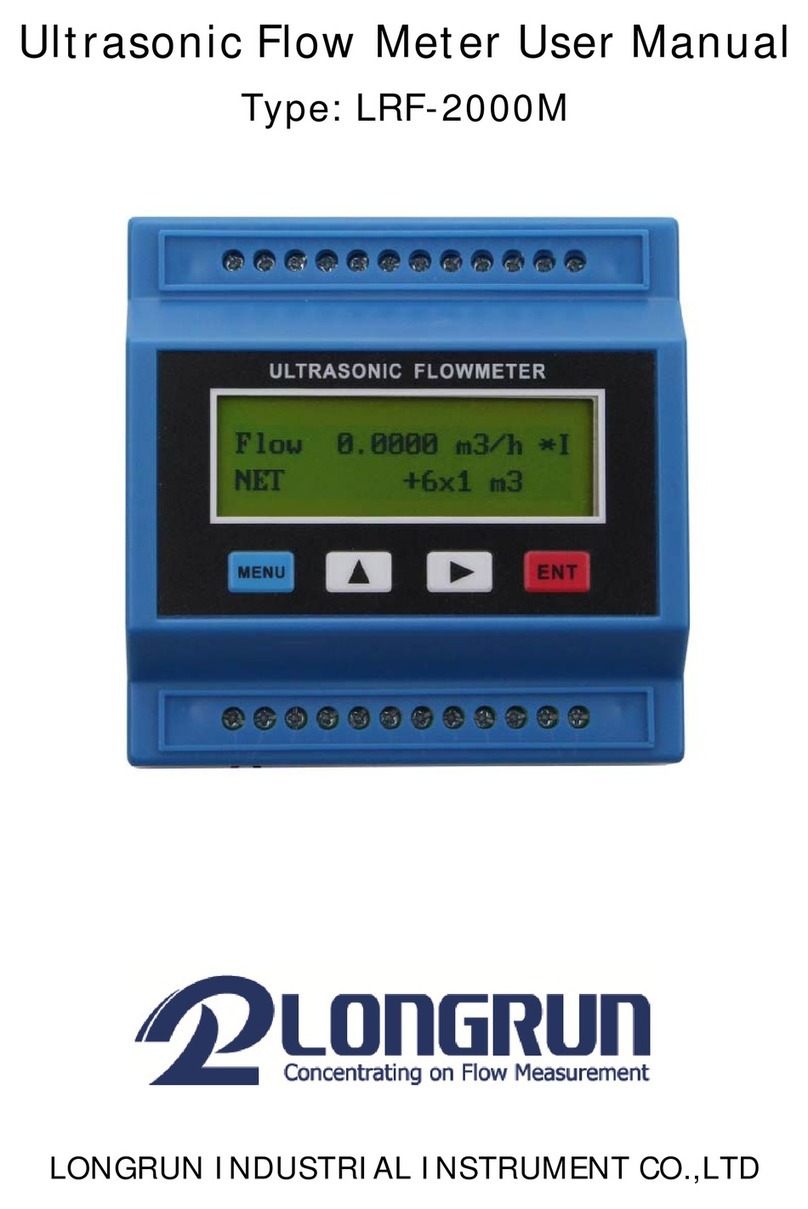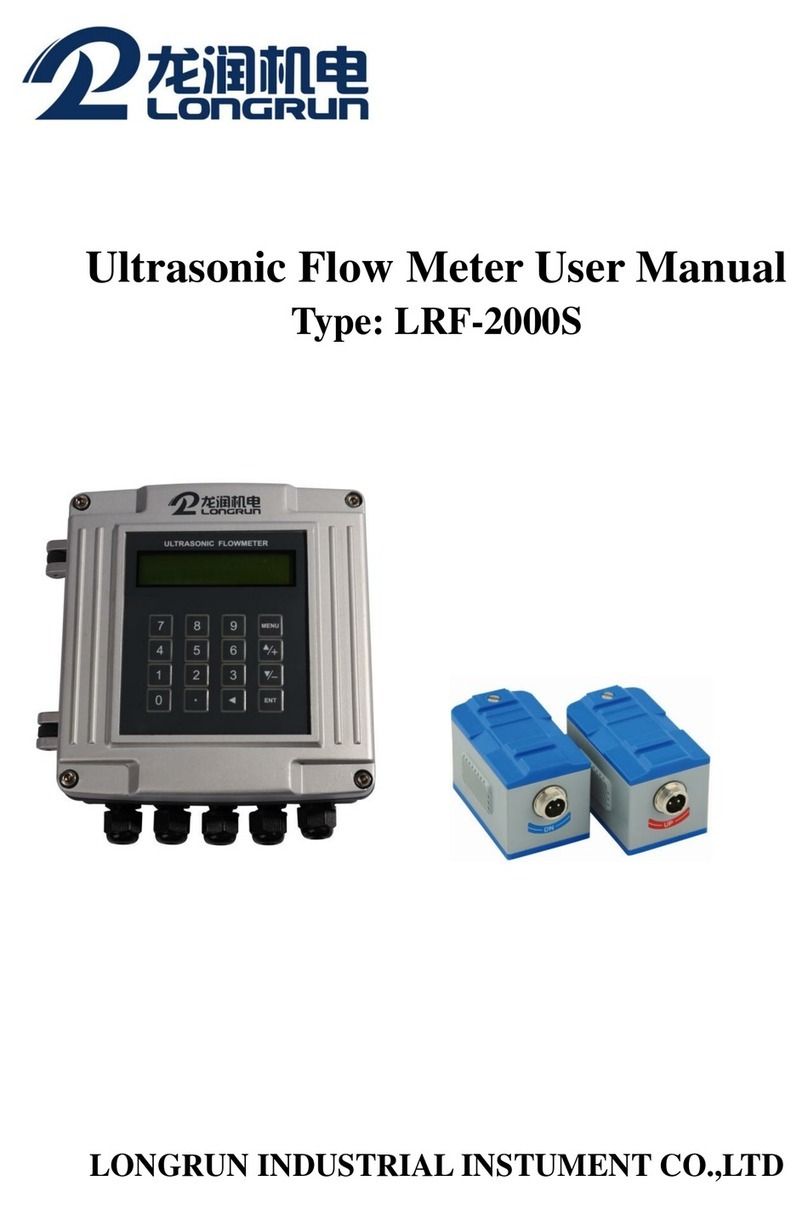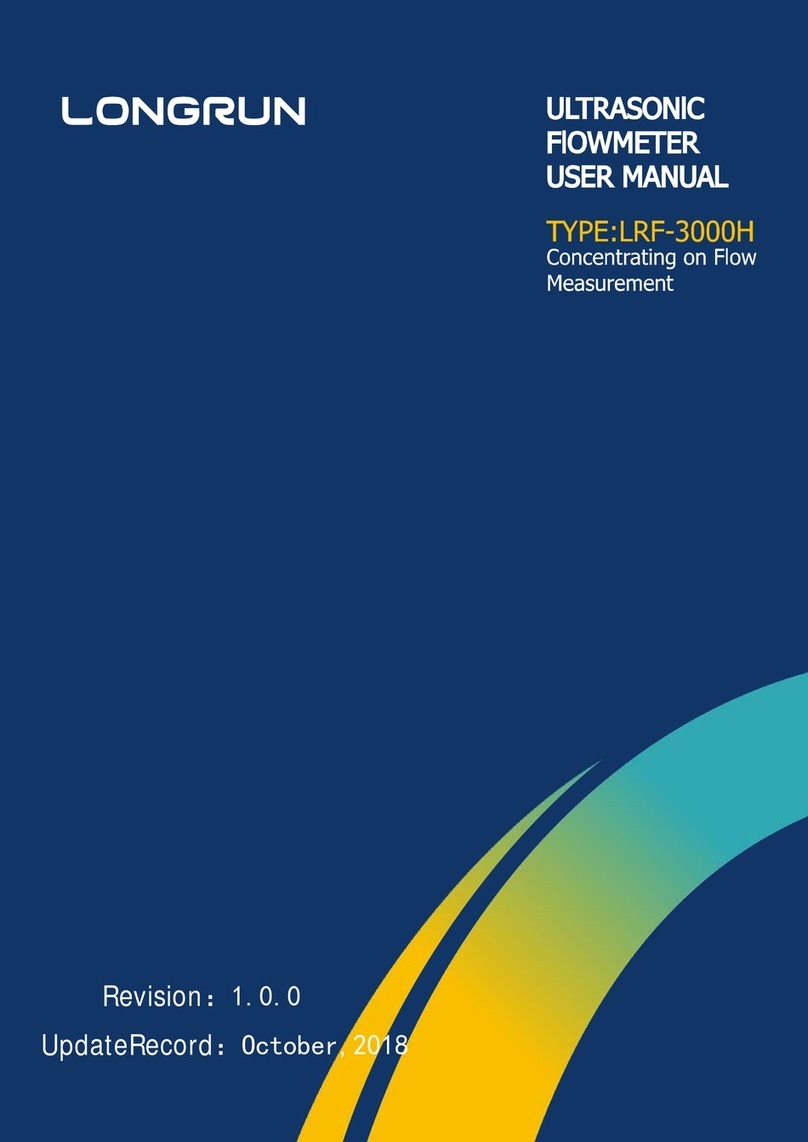
LRF-6000H Ultrasonic flowmeter
Page 4of 29
Content
Transmitter Installation................................................................. 6
Powering On......................................................................................................................... 7
Keypad Operation................................................................................................................7
Main screen..................................................................................... 8
Setup Menu....................................................................................10
Setup Menu – Measurement Parameter..........................................................................10
Setup Menu – System Setting............................................................................................11
Setup Menu – Calibration................................................................................................. 13
Setup Menu – Output Setting........................................................................................... 15
Setup Menu – Energy Setting ......................................................................................... 17
Setup Menu – Historical Data...........................................................................................17
Setup Menu – System Information...................................................................................18
Setup Menu – Manual Totalizer....................................................................................... 18
Setup Menu – Flow Batch Controller (For wall mount model).................................... 19
Setup Menu – Language Setting.......................................................................................19
Measurement Site Selection.........................................................20
Transducer Installation................................................................21
Transducer spacing............................................................................................................ 21
Transducer Mounting Methods........................................................................................ 21
V Method...................................................................................................................... 22
Z Method.......................................................................................................................22
N Method (not commonly used)...................................................................................23
W Method (rarely used)................................................................................................23
Transducer Mounting Inspection..................................................................................... 24
Signal Strength..............................................................................................................24
Signal Quality (SQ value).............................................................................................24
Total Time and Delta Time........................................................................................... 24
Transit Time Ratio........................................................................................................ 25
Operating Instructions.................................................................26
Zero Cut.............................................................................................................................. 26












